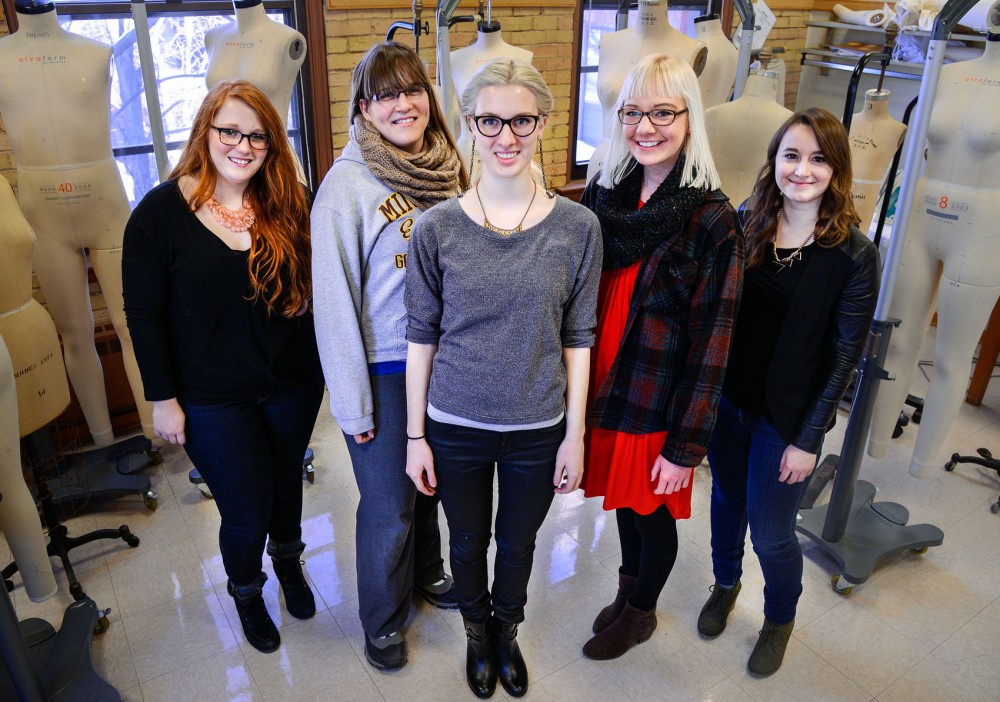In a crowd of students sitting in Nicholson Hall’s lounge, Karen Fiegen stands apart.
But it’s not her colorful shirt or her cat-eye glasses — the apparel studies senior distinguishes herself as leader of a group of University of Minnesota students designing space clothing for NASA.
Typically, teams chosen to compete in NASA’s competition, the Reduced Gravity Education Flight Program, are made up of engineering and science students doing high-tech work. But Fiegen’s team hopes to bring a new perspective that considers astronauts’ comfort.
“We think they bring something unique to the design and to the protective clothing in space, and we’re glad NASA agrees with us,” said Lucy Dunne, an associate design professor mentoring the students.
Jordyn Reich, Mary Berglund, Crystal Compton, Kira Erickson and Fiegen make up the first group of all fashion students selected for NASA’s competition, Dunne said.
The University team’s entry focuses on improving the gloves astronauts wear in space.
Fiegen said spacesuits are often made of a cooling garment that deters sweat, but they don’t extend to cover hands. Now, astronauts turn to tight gloves that allow sweat to pool up, causing rashes on their hands and fingernail rotting, she said.
To solve this, Fiegen said her team suggested using materials research to find the best textiles and materials to minimize sweating and move perspiration away from the skin.
Acceptance into NASA’s program is highly competitive, Dunne said, and only about a fifth of applicants were chosen.
This year, NASA selected 18 teams from around the country, and the winning team may have its research used by NASA.
As part of the competition, teams ride a zero-gravity flight simulator to test their experiments in the atmosphere where astronauts would use the technology.
Dunne heads the University’s Wearable Technology Lab, the only of its kind in the nation, and her students have worked with NASA in the past, she said.
Most team members hope to attain a post-graduate degree in functional design, but Fiegen didn’t apply to graduate school and is simply getting firsthand experience in the NASA competition.
“[This is] an exercise in possibility, just seeing how far I can take myself, even though it’s really hard,” Fiegen said.
The NASA competition begins in April. This summer, the five team members and Dunne will work at Smart Clothing, Smart Girls — a summer camp that teaches young girls the variety of things they can do while studying apparel design.
“We really want to focus on getting the awareness out to young girls that they can do something in apparel or science and show them that these careers in apparel do exist,” Erickson said.


